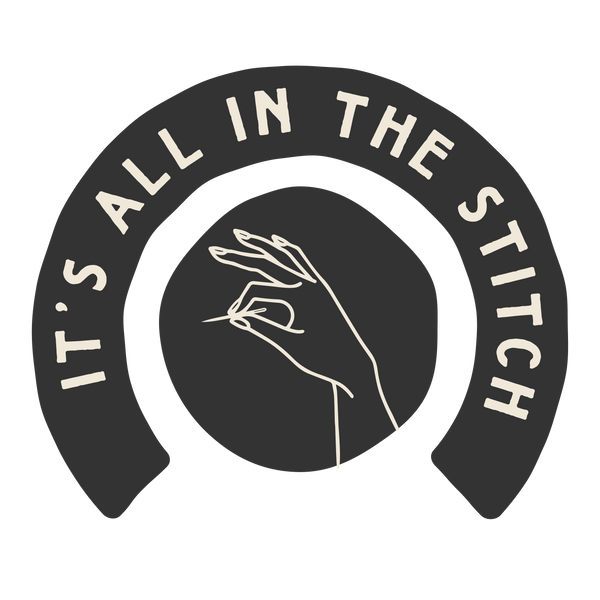There are a lot of different terms and techniques used in the sewing world. If you are new to the space, it can be understandingly overwhelming.
I wanted to put together just a handful of terms that you should know for needle turn appliqué if you're still new to all of this!
Needle: A sewing needle is a slender, pointed tool used in sewing and stitching fabric or other materials together. It typically has an eye (a small hole near the pointed end) through which thread passes, allowing the needle to carry the thread as it penetrates the fabric. Needles come in various sizes and types, designed for different fabrics and sewing purposes.
Thread: Sewing thread is a thin strand of yarn or filaments of various materials that are twisted or spun together to form a flexible and strong string. It is used in sewing to join fabric pieces together, create seams, and stitch various components of garments or other textile items. Sewing threads come in a variety of materials, such as cotton, polyester, nylon, silk, or a blend of these, and they can be available in different thicknesses or weights to suit various sewing applications. The choice of thread depends on factors like the type of fabric being sewn, the sewing technique, and the intended use of the finished product.

Basting: Basting refers to a temporary holding of fabric pieces together. It is done with the purpose of creating a temporary bond between the layers of fabric before the final and more permanent stitching is applied. This helps in aligning the fabric pieces accurately and allows for adjustments before committing to the final sewing. Basting is commonly used in garment construction, quilting, and other sewing projects where precision and accuracy are crucial.

Right side of fabric/wrong side of fabric: In sewing and fabric terminology, the "right side" and "wrong side" refer to the two main surfaces of a fabric. These terms are used to describe the appearance and characteristics of each side.
-
Right Side:
- The right side is the outward-facing surface of the fabric, the side that is meant to be visible in the finished product.
- It often features the fabric's pattern, print, or texture, and it is usually the more vibrant or finished-looking side.
- When following a sewing pattern, instructions often specify which side should be considered the right side during construction.
-
Wrong Side:
- The wrong side is the opposite side of the fabric, facing inward and not intended to be visible in the final product.
- It may be less finished, with a muted appearance, and it typically lacks the prominent features found on the right side.
- Seams and stitching are often done on the wrong side to hide them from view on the finished garment or item.
Identifying the right and wrong sides is important in sewing to ensure that fabric pieces are assembled correctly according to the intended design or pattern. It helps achieve a neat and polished look in the final product, with the right side facing outward for a visually pleasing result. If you are using a solid color quilting cotton then you will likely not be able to tell the difference between the right and wrong side and that's okay!

Pressing: In sewing, "pressing" refers to the process of using an iron or a heated pressing tool to smooth fabric, shape seams, and set stitches during the construction of a garment or other textile projects. Pressing is a crucial step in achieving a professional and polished appearance in sewing.
Fabric marking tool: A fabric marking tool in sewing is an instrument or device used to make temporary markings on fabric. These markings are typically used to indicate specific points, lines, or pattern details during the sewing or cutting process. Fabric marking tools help sewists, quilters, or crafters transfer important information from patterns to the fabric accurately. There are various types of fabric marking tools, and the choice often depends on the fabric type and the intended purpose.

Seam: In sewing, a seam refers to the line where two pieces of fabric are joined together by stitching. Seams are fundamental to constructing garments, accessories, and other fabric items. The primary purpose of sewing seams is to connect individual fabric pieces to create a larger, cohesive structure. Seams can vary in appearance, strength, and function based on the sewing technique, stitch used, and the purpose of the finished item.
Seam allowance: The seam allowance is the distance between the stitched line (seam) and the edge of the fabric. It is an important measurement that varies depending on the sewing pattern and project requirements.



0 comments